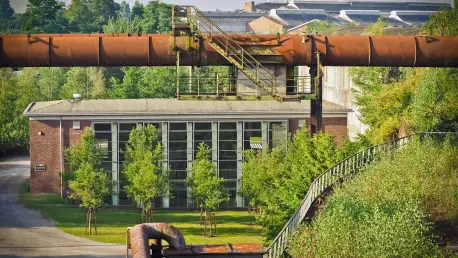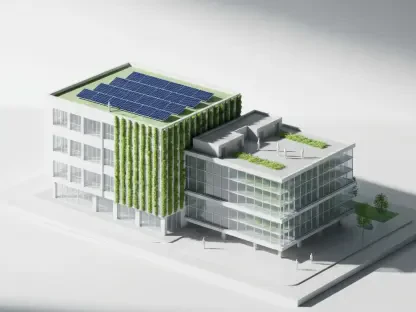In the world of sustainable architecture and historic building conservation, few endeavors are as challenging yet rewarding as the refurbishment of a landmark like Lambeth Palace. Luca Calaraili, a seasoned architect and innovator in construction technology, shares insights into the extensive £40 million refurbishment at Lambeth Palace. This project bridges centuries-old history with cutting-edge sustainability.
Can you provide an overview of the recent refurbishment project at Lambeth Palace?
The Lambeth Palace refurbishment was an ambitious project focused on transforming a centuries-old residence into a beacon of modern sustainability. This involved upgrading its heating and energy systems, embracing renewable energy sources, and making essential repairs to its historic fabric. The objective was not only to preserve the palace’s rich history but also to reduce its carbon footprint substantially.
What was the main goal of the £40 million refurbishment at Lambeth Palace?
The central goal was to embrace a sustainable future while respecting the historical significance of the site. This meant implementing energy-efficient solutions such as air source heat pumps and solar panels while maintaining architectural integrity. The project aimed to ensure that the palace operates independently from fossil fuels and aligns with the Church of England’s net-zero ambitions.
Could you describe some of the key sustainability upgrades made to Lambeth Palace?
One of the notable upgrades included the installation of three air source heat pumps. These, combined with rooftop solar panels, provide a cleaner, renewable energy source. We also double-glazed 160 of the palace’s historic windows, which will significantly enhance energy efficiency. Additionally, we recycled over 39 tonnes of timber throughout the process, emphasizing our commitment to sustainability.
How do air source heat pumps contribute to the palace’s new energy system?
Air source heat pumps play a crucial role by converting ambient air into usable energy, thus providing a sustainable heating solution for the palace. These pumps are highly efficient and significantly reduce reliance on traditional heating methods, which is vital for meeting low-carbon objectives.
Can you talk about the work done on the 17th-century Great Hall and why it was significant for this refurbishment?
Restoring the Great Hall was a pivotal part of this project because of its historical importance and architectural beauty. The Great Hall’s timber roof, damaged during the Second World War, was meticulously repaired. This required collaboration with expert timber specialists and conservation professionals to ensure precision and care, preserving the hall’s character and structural integrity for future generations.
How did the team address the challenges of working with historic and fragile structures during the refurbishment?
Working with historic buildings requires a delicate balance between preservation and modernization. Our team harnessed the expertise of stonemasons, timber specialists, and conservation professionals. We carefully navigated the fragile elements, using minimally invasive techniques to ensure that repairs and upgrades did not compromise the palace’s historic features.
What role did Historic England play in the refurbishment, and why was their involvement important?
Historic England provided invaluable guidance and oversight, helping to ensure that our interventions adhered to conservation principles. Their involvement was crucial because they offer insight into best practices for preserving heritage sites, ensuring that any modifications enhance the historical value rather than detract from it.
Could you discuss some of the expertise required for this project, especially with restoring historic elements?
Restoring historic elements required specialized skills in areas such as timber restoration, masonry, and historical painting techniques. Professionals needed an understanding of traditional materials and methods to maintain the authenticity of the palace while integrating modern conveniences carefully.
How does this project align with the Church of England’s net-zero ambitions?
This project aligns closely with the Church of England’s net-zero ambitions by significantly reducing the palace’s carbon footprint. The switch to renewable energy sources makes the palace a model for how historic institutions can tackle climate change and enhance energy efficiency.
How do the architectural and engineering enhancements balance modernization with the preservation of Lambeth Palace’s historical significance?
The enhancements were planned with a dual focus on sustainability and heritage preservation. By employing invisible or reversible interventions and prioritizing materials that blend with the existing structure, we ensured that the palace retains its historical essence while meeting contemporary environmental goals.
What are some lessons learned from this project that might apply to future refurbishments of historic sites?
One key lesson is the importance of collaboration among diverse experts to achieve a balance between preservation and sustainability. Additionally, integrating sustainable technology into historic structures is feasible and beneficial. This project underscores the potential for historic buildings to lead in the sustainability arena without losing their cultural significance.









